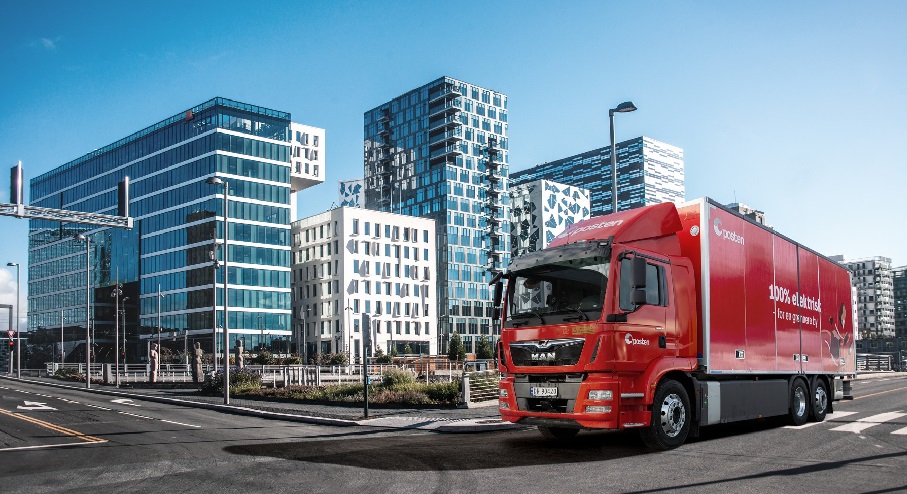Electric mobility is advancing rapidly in Norway, especially with car adoption.
But what is the situation with heavy transport?
For vans, trucks, and buses, the transition has been slower due to the lack of available units.
“In Norway, we don’t manufacture vehicles; we only import them. So, it depends on OEMs to produce the products,” explains Petter Haugneland, Assistant Secretary General at the Norwegian Electric Vehicle Association, in conversation with Mobility Portal Europe.

However, he acknowledges that “although it started slowly, the situation is improving,” as more models of electric vans and trucks become available.
“Moreover, for commercial vehicles, adoption is much quicker than for passenger cars,” says Haugneland.
It’s worth noting that, as road transport in Norway accounts for 17% of the country’s greenhouse gas emissions, the government has set a target for all new trucks to be zero-emission or run on biofuel by 2030.
Thus, promoting the adoption of emission-free heavy vehicles is crucial.
“We receive feedback from drivers who have tried electric trucks and loved them because they are quiet and pleasant to drive. Many of them also have an electric car at home, so they understand how they work and want to make the switch,” Haugneland comments.
He adds, “This is an advantage because in Norway, everyone has experience driving an EV or knows someone who has one.”
Additionally, besides increasing the number of emission-free vans and trucks, the charging infrastructure is also growing.
For example, Kempower recently partnered with Wennstrom to provide direct current (DC) fast charging solutions for electric trucks to Fastcharge, one of the leading heavy vehicle charging operators in the country.
Located in Oslo, it is Norway’s first public charging site dedicated exclusively to trucks.
In the future, it will also be able to support new vehicles compatible with the Megawatt Charging System (MCS).
Incentives are “the recipe for success”
Electromobility in Norway continues to grow rapidly: in the first half of this year, 85% of new passenger cars sold were fully electric.
In fact, more than 25% of the fleet on Norwegian roads is already electric.
“This is a milestone. We are on track to achieve the parliament and government’s goal of a 100% market share for emission-free cars by 2025,” says Haugneland.
He explains that Norway is a global leader in the EV market due to government policies.
“That’s the recipe for success,” he asserts.
“Thanks to incentives, the purchase price of electric vehicles is competitive compared to petrol, diesel, and hybrid cars. That’s why Norwegians choose them,” he adds.
For zero-emission commercial vehicles—vans, trucks, and buses—only those emitting less than 84 g CO2/km are eligible for a tax deduction, according to information from the European Automobile Manufacturers’ Association (ACEA).
However, it is noteworthy that the state-owned company Enova announced in April that it awarded subsidies for 108 zero-emission vehicles, totalling 136.5 million Norwegian krone.
This grant is the first from its new programme supporting zero-emission heavy vehicles.
“If we can convert more buses and trucks to batteries or hydrogen, we will achieve significant benefits,” said Andreas Bjelland Eriksen, Minister of Climate and Environment.
“The government has strengthened Enova with five billion Norwegian krone since we took office, and we are now seeing the results,” he added.
Fast chargers hard to find and use: The major challenge in Norway
A significant challenge for the electromobility sector in Norway involves fast charging stations.
“This is the most challenging area, and we really need to make adjustments,” explains Haugneland.
In Norway, the fast charging market is private and commercial, as there are enough customers that a public support scheme is not necessary, at least not for passenger cars.
“But in terms of ease of use, we still have a long way to go,” he comments.
The reality is that fast chargers are not easy to find, start charging, or pay for.
“Price information needs to improve so there can be healthy competition in the market, allowing people to make informed decisions and choose the most economical or best deal,” Haugneland acknowledges.
He continues, “But not all commercial companies want to share this information unless they have to.”
However, Haugneland assures that “the government is investigating how to make prices easily accessible.”









One Response
My brother recommended I would possibly like this
blog. He was entirely right. This publish truly made my day.
You cann’t imagine just how much time I had spent for this info!
Thank you!